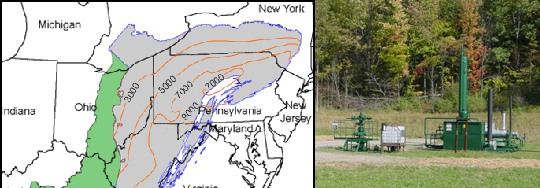Why doesn’t this country have a National Energy Plan?

Energy is arguably the most important issue facing our economy, our society and the future of our democracy over the next 50 years. Don’t we want to be prepared?
Recently, I’ve been rethinking some of my assumptions about energy and all the buzzwords, trends, crises and controversies that tag along with that word. Pardon me while I clear my mind of a few strays so I can write coherently. Peak Oil, anthropogenic climate change, Marcellus shale gas, Amory Lovins, renewable energy, cleantech, ARPA-E, energy audits, Dick Cheney, efficiency, IPCC, ANWR, commissioning, biomass, Elon Musk, trash to energy, algae, energy independence, Shai Agassi, greenhouse gases, carbon emissions, whew! That feels better.
Now for the questions that are rolling around in my head . . .
Does it matter if climate change is or isn’t caused by human activity?
Is it even truly possible to accurately predict effects of climate change, given the computer models we have, the chaotic nature of the earth’s climate, and the number of assumptions that must be made?
Does accepting the impossibility of certainty about our future climate make any difference?
Can we power the vast churn of materials through our hyper-consumerist society with renewable energy alone?
And what about the fact that we currently (that’s, TODAY) have all the technology and know-how to make our buildings 75% more efficient – or more?
Did you know that buildings use 75% of the electricity in this country and half the energy in general?
And that about 60% of all electricity is generated by burning coal? (I know that’s true for Maryland; maybe it’s higher nationwide.)
And that whole swaths of the Appalachian Mountains are being leveled to get at the coal more easily? (Byproduct of this: streams in the valleys get filled in with all the gunk, as in, killed.)
And that the Marcellus shale formation is now in the crosshairs of an uncountable number of natural gas prospecting companies? (The track record of whose activities in the West would make your hair stand on end. And don’t even get me started on all the exemptions from our nation’s most sacred environmental – and human health – protection laws that these same industries enjoy in Cheney et al’s 2005 Energy Bill, still in effect.)
How motivating is it to be told that you have to sacrifice in order to be more efficient and harmonious with the earth?
Do you believe it when experts say that overhauling our industrial economy to become radically cleaner and more efficient is the biggest opportunity for innovation and economic development in our nation’s history? That it’s a strategic imperative, a key to national security, and a way to regain our stature as an economic superpower?
In the absence of any coherent national policy, what is there to do?
Fortunately, that last one has an easy answer: plenty. All across the nation, at the local level, states, counties and cities are crafting their own energy policies. They are taking action locally to reduce carbon emissions, retrofit buildings to be more efficient, encourage bicycling, public transit, walking, car sharing and other transportation alternatives, develop food locally, support and promote local businesses, and hold eco-festivals to build awareness and showcase alternatives, among many other activities.
And, personally — whether at home or in your business — here are a few articles to get ideas and inspiration from:
Shift Your Mindset from Hell to Heaven — includes three tips on how to do this
Practical Tips to Save Energy at Home — our most commented-on article. Be sure to read the comments; they push the tips up to over 20 at least.
How Low Can You Go? — about saving energy and money (while also reducing carbon emissions) in business
Nationally, websites abound to help individuals, communities, and companies to become more environmentally friendly and, possibly more broadly appealing, to use resources more efficiently, thereby saving money. A small sampling of those sites:
Writer / activist Bill McKibben is a co-founder of this site which is dedicated to raising the world’s awareness of the number (350 parts per million) that indicates a safe level of CO2 in our atmosphere. Has enjoyed phenomenal success and attracted wonderfully creative projects that move and inspire.
Rate your impact, find local services and products to help go green. Geared to lifestyle and home, but the categories and topics are educational.
A suite of sites including blogs, newsletters, videos, and reports. Includes ClimateBiz.com, GreenerDesign.com, and GreenerBuildings.com. Very high-quality, trustworthy source of news, analysis, and information. Now tracking consumer trends with the “Green Confidence Index.”
A fun do-it-yourself site for businesses to create a green mission statement and begin to get the word out, so your clients and prospects know you are green.
The U.S. Green Building Council (USGBC), Architecture 2030, and Building Green
While very different organizations with different missions, what these have in common is their leadership in this conservation part of the cycle. Architecture 2030 has wonderful graphic design, making complex concepts easily understood. Their material is meticulously researched and cited. For the past 10 years, the USGBC has been transforming the design and construction industry with its LEED Green Building Rating System. The Building Green website has impeccable standards, deep research, and lively writing. Independently-researched articles on materials, technologies, systems, policy, and trends are presented both in the journal and in a blog.
Just to Recap
Energy in this country is Job One. How we use it, how we save it, and how we develop new, less wasteful forms of it. In fact, I feel so strongly about this that I’ll just say this: “It’s the energy, stupid.”





 View the dynamic, moving GOforChange: Greening Baltimore video
View the dynamic, moving GOforChange: Greening Baltimore video
